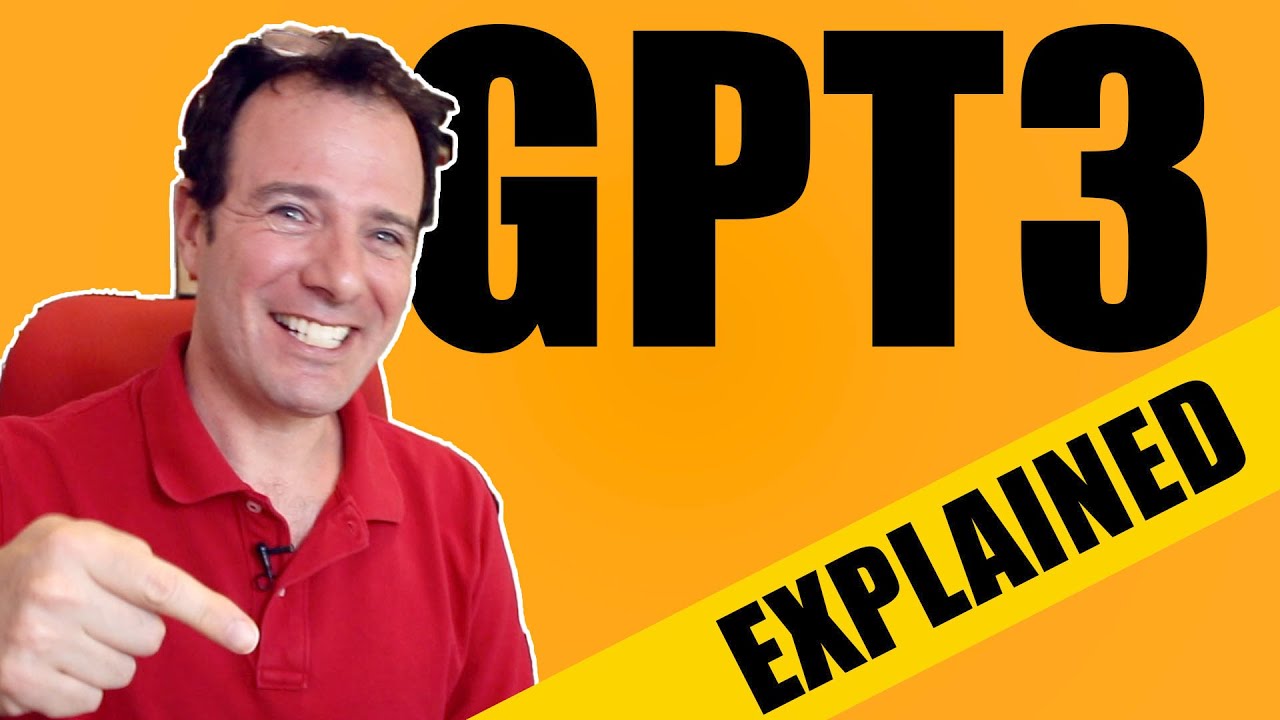GPT-3 - Architecture, Capabilities, Applications And More
GPT-3 (Generative Pretrained Transformer-3) is the third iteration of OpenAI’s language model and considered as one of the largest and most advanced AI language models to date. It has demonstrated impressive performance in several natural language processing tasks, such as language translation, summarization, question-answering, and even creative writing.
Author:Suleman ShahReviewer:Han JuFeb 07, 202322 Shares416 Views

Generative Pretrained Transformer 3 or GPT-3is the third version of a language model developed by OpenAI.
It is a large artificial intelligence (AI)model that uses deep learning techniques to generate human-like text based on the input it receives.
It has been trained on a massive corpus of text data, allowing it to generate coherent and diverse responses to a wide range of prompts.
GPT-3 is considered one of the most advanced language models to date and has been used in a variety of applications, including language translation, question-answering, and text completion.

GPT 3 Demo and Explanation - An AI revolution from OpenAI
OpenAI GPT-3
OpenAI is a research organization that aims to promote and develop friendly AI in a way that benefits humanity as a whole.
With the goal of advancing AI in a responsible and safe manner, it was founded in 2015 by these people:
- Pretoria-born billionaire businessman and investor Elon Musk
- American entrepreneur and programmer Sam H. Altman
- American researcher Greg Brockman
- Canadian computer scientist Ilya Sutskever
- Polish computer scientist Wojciech Zaremba
OpenAI is focused on developing cutting-edge AI technologies such as language models, reinforcement learning, and generative models.
The organization also conducts research on the potential social and economic impacts of AI, and advocates for the responsible use and regulation of AI systems.
OpenAI developed a state-of-the-art language model called GPT-3 (Generative Pretrained Transformer 3), initially released on June 11, 2020.
It has been trained on a massive amount of diverse text data, making it capable of generating human-like text, answering questions, translating languages, and performing various other NLP tasks.
NPL (Natural Language Processing) is a subfield of artificial intelligencethat deals with the interaction between computers and humans using natural language.
With its ability to generate high-quality, coherent text, GPT-3 has the potential to revolutionize the field of NLP and bring about new advancements in AI.
NLP tasks are tasks related to the processing and understanding of human language. Some common NLP tasks include:
- Text classification
- Named entity recognition
- Part-of-speech tagging
- Sentiment analysis
- Machine translation
- Text summarization
- Question answering
- Coreference resolution
- Dependency parsing
- Spell checking
- Text generation
- Topic modeling
These tasks involve a combination of natural language understanding, computational linguistics, and machine learning techniques.
In summary, GPT-3 is a specific model in NPL that excels in generating text.
GPT-3 Architecture
The architecture of GPT-3 is based on the transformer architecture, a type of neural network designed for processing sequences of data such as text.
It consists of a series of layers, each with a self-attention mechanism, fully connected layers, and layer normalization.
The self-attention mechanism allows the model to weigh the importance of each element in the input sequence and make decisions accordingly.
This allows GPT-3 to process input sequences in parallel, reducing the computational time compared to recurrent neural networks.
The fully connected layers are used to produce the final output, while the layer normalization helps to stabilize the training process and prevent overfitting.
Transformer Architecture
Transformer architecture is a type of deep learning neural network architecture used primarily in the field of natural language processing (NLP).
It was introduced in 2017 in a paper called “Attention Is All You Need” (with Ashish Vaswami as lead author) and has since become one of the most widely used architectures in NLP.
The main innovation of the Transformer is the self-attention mechanism, which allows the network to weigh the importance of different input elements when making predictions, rather than relying solely on the sequential order of the elements.
This makes it well-suited for tasks such as language translation, text classification, and text generation.
GPT-3 uses transformer architecture to process and generate text by using an attention mechanism to weigh the importance of different parts of the input text when making predictions.
GPT-3 Technical Specifications
The technical specifications of GPT-3 are:
a. Architecture: Transformer, based on the transformer architecture introduced in the paper “Attention Is All You Need” (2017).
b. Size: The GPT-3 model has 175 billion parameters, making it the largest language model to date.
c. Training Data: GPT-3 was trained on a diverse range of internet text, including websites, books, and articles.
d. Language:GPT-3 is a multi-language model, capable of generating text in multiple languages including English, Spanish, French, German, Chinese, etc.
e. Inputs: GPT-3 takes in a sequence of text and generates a continuation of that text.
f. Outputs: The model outputs a probability distribution over the vocabulary for the next word in the sequence, which can then be used to generate text.
g. Processing: GPT-3 requires significant computational resources to run and is usually run on GPUs.
These are the main technical specifications of GPT-3.
GPT-3 Application
GPT-3 has a massive number of parameters, over 175 billion, which allows it to have a vast range of knowledge and language understanding capabilities.
Some applications of GPT-3 include:
1. Natural Language Processing (NLP): GPT-3 can be used for tasks such as text classification, named entity recognition, and machine translation.
2. Chatbots: GPT-3 can be integrated into chatbots to provide more human-like conversations with users.
3. Content Generation: GPT-3 can generate articles, blog posts, and other forms of written content, allowing businesses and individuals to automate the creation of high-quality text.
4. Programming: GPT-3 can be used to generate code, making it a valuable tool for developers.
5. Creativity: GPT-3 can be used to generate poetry, fiction, and other forms of creative writing, providing new avenues for human expression.
These are just a few examples of the many possible applications of GPT-3. As the field of AI continues to evolve, it's likely that new and innovative uses for this technologywill emerge.
Future Developments And Ongoing Research
OpenAI continues to research and develop language models, including GPT-3.
Some potential future developments include improving the model’s efficiency and performance, making it more versatile and multi-lingual, and incorporating ethical considerations into its development and deployment.
Some of the current areas of focus for ongoing GPT-3 research include fine-tuning the model for specific tasks, improving the model’s ability to handle long-term dependencies, and reducing the computational requirements of the model.
Additionally, OpenAI and other research institutions are exploring new applications for language models such as in dialogue systems, machine translation, and personalized recommendations.
However, as GPT-3 is a proprietary technology, it is difficult to predict its exact future developments and research directions.
People Ask
Is GPT-3 Still Available?
Yes, OpenAI’s GPT-3 is currently available.
However, access to it is limited and primarily offered through API (Application Programming Interface) access to select partners and developers.
Is GPT-3 Available For Free?
No, GPT-3 is not available for free.
It is only accessible through OpenAI’s API, and the usage of the API requires paying for access and usage fees.
Can I Use OpenAI For Free?
OpenAI offers various APIs and tools, some of which are available for free, while othersrequire payment or have usage limits.
You can check the pricing and availability of specific OpenAI products on their website or by contacting their sales team.
Final Thoughts
The potential impact of GPT-3 on the field of AI is significant, as it has the ability to revolutionize the way computers understand and generate human-like text.
However, it also raises concerns about the ethical and societal implications of such powerful AI models, particularly in the areas of biased decision making and misinformation.
Overall, the future outlook for GPT-3 is bright, with many possibilities for further development and integration into various industriesand applications.
Still, it’s crucial to approach the technology with caution and ensure responsible usage to maximize its benefits while minimizing the potential harm of GPT-3.

Suleman Shah
Author
Suleman Shah is a researcher and freelance writer. As a researcher, he has worked with MNS University of Agriculture, Multan (Pakistan) and Texas A & M University (USA). He regularly writes science articles and blogs for science news website immersse.com and open access publishers OA Publishing London and Scientific Times. He loves to keep himself updated on scientific developments and convert these developments into everyday language to update the readers about the developments in the scientific era. His primary research focus is Plant sciences, and he contributed to this field by publishing his research in scientific journals and presenting his work at many Conferences.
Shah graduated from the University of Agriculture Faisalabad (Pakistan) and started his professional carrier with Jaffer Agro Services and later with the Agriculture Department of the Government of Pakistan. His research interest compelled and attracted him to proceed with his carrier in Plant sciences research. So, he started his Ph.D. in Soil Science at MNS University of Agriculture Multan (Pakistan). Later, he started working as a visiting scholar with Texas A&M University (USA).
Shah’s experience with big Open Excess publishers like Springers, Frontiers, MDPI, etc., testified to his belief in Open Access as a barrier-removing mechanism between researchers and the readers of their research. Shah believes that Open Access is revolutionizing the publication process and benefitting research in all fields.

Han Ju
Reviewer
Hello! I'm Han Ju, the heart behind World Wide Journals. My life is a unique tapestry woven from the threads of news, spirituality, and science, enriched by melodies from my guitar. Raised amidst tales of the ancient and the arcane, I developed a keen eye for the stories that truly matter. Through my work, I seek to bridge the seen with the unseen, marrying the rigor of science with the depth of spirituality.
Each article at World Wide Journals is a piece of this ongoing quest, blending analysis with personal reflection. Whether exploring quantum frontiers or strumming chords under the stars, my aim is to inspire and provoke thought, inviting you into a world where every discovery is a note in the grand symphony of existence.
Welcome aboard this journey of insight and exploration, where curiosity leads and music guides.
Latest Articles
Popular Articles


